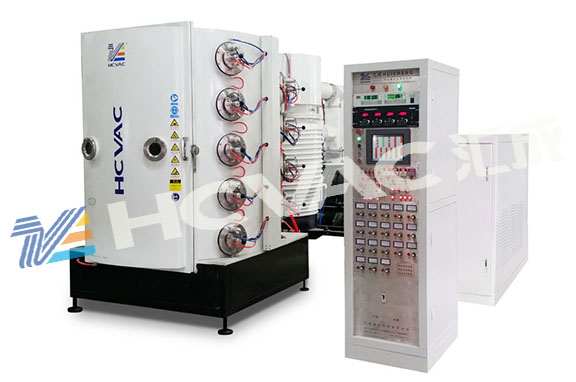PVD coating, also known as "physical vapor deposition coating", has a wide range of applications and fewer limitations. However, few people truly understand it, and even fewer have knowledge of PVD vacuum coating machine. Below is a detailed introduction by the vacuum editor, hoping to help everyone:

There are three major categories of PVD coating: vacuum sputtering coating, vacuum ion coating, and vacuum evaporation coating.
Equipment used for PVD coating: usually called PVD vacuum coating machine or PVD vacuum coating machine
PVD coating principle: In a vacuum environment, low voltage and high current arc discharge technology is used to heat the evaporation source or use glow discharge and ion bombardment to deposit the coating material on the surface of the product to be coated.
PVD coating can be applied to various single metal coatings (gold, silver, aluminum, zinc, titanium, etc.), oxide coatings (TiO2, etc.), carbide coatings (TiC, TiCN, etc.), and nitride coatings (TiN, CrN, TiAiN, etc.). The coating color can be single color or seven color. The thickness of the film is micron level, and the thickness of the vacuum deposition is relatively thin, so the coated film hardly affects the size of the product.
Vacuum sputtering coating:
Glow discharge is the foundation of sputtering technology. Sputtering is generally generated during the process of glow discharge. Sputtering is the bombardment of a solid surface with particles or ion beams with high kinetic energy, causing atoms near the solid surface to receive a portion of the incident particles, which carry energy and leave the solid to enter a vacuum and deposit on the product.
Factors affecting sputtering effect: 1. Target material; 2. Mass of bombarding ions; 3. The energy of bombarding ions; 4. The incidence angle of the bombarding atom.
Vacuum ion coating:
Ion plating is a new coating technology based on evaporation plating and sputtering plating. The vacuum PVD coating process is carried out in plasma, and ion plating can obtain excellent performance film layers. The characteristics of the film layer are:
1. The surface smoothness is good, and the thickness of deposition can be strictly controlled;
2. The membrane has strong adhesion and high adhesion;
3. The film thickness is uniform without boundary effects;
4. The density of the film layer is high.
Vacuum evaporation coating:
The method of heating the thin film raw material of the evaporation source in a vacuum chamber to form atomic or molecular vapor that flows into the product surface and condenses to form a solid thin film.
Advantages: The evaporation equipment is relatively cheap, easy to operate, has a fast film forming rate, and the deposited film layer has high purity, good quality, and can control the thickness;
Disadvantages: The adhesion of the film layer is low, the process repeatability is not good enough, and it is not easy to obtain a crystalline thin film layer.
For these three PVD coating processes, different products need to choose different processes and be equipped with specialized equipment. PVD vacuum coating machine consists of a vacuum chamber, power supply system, control system, cooling system, vacuum acquisition system, and components, with varying prices.



